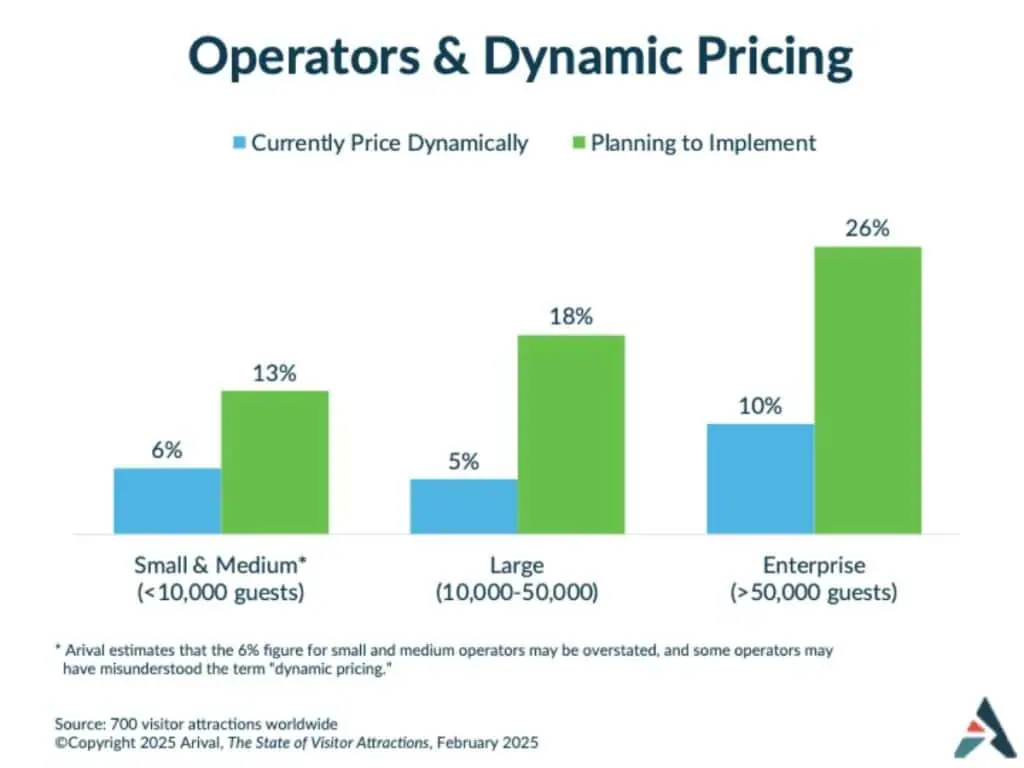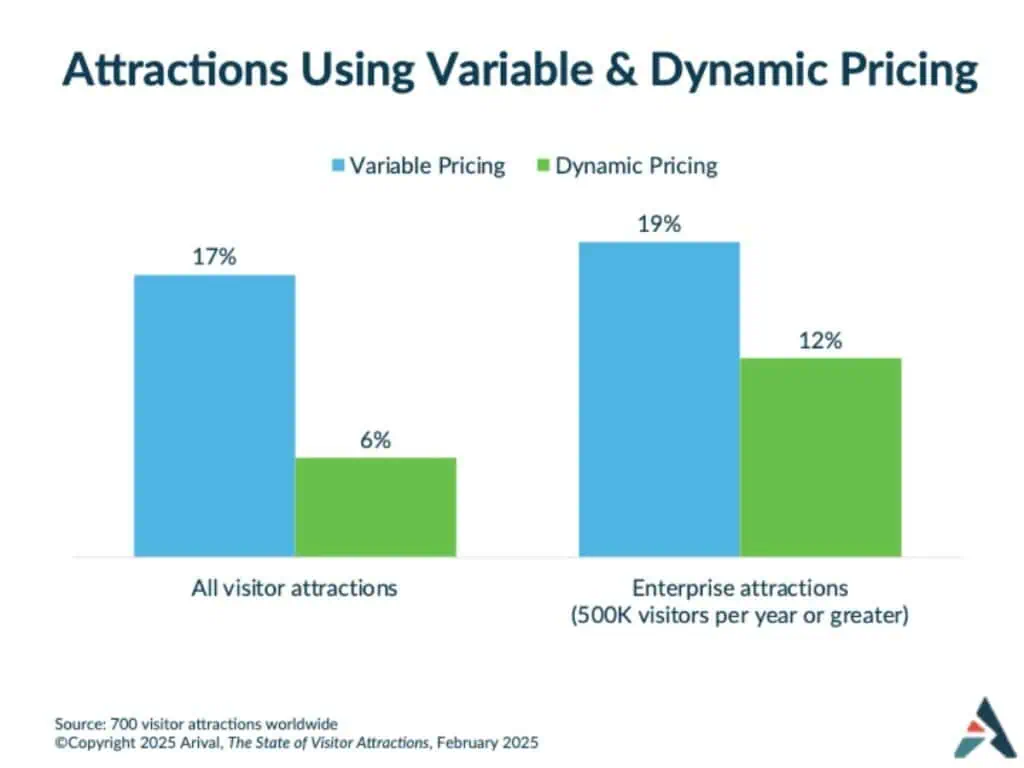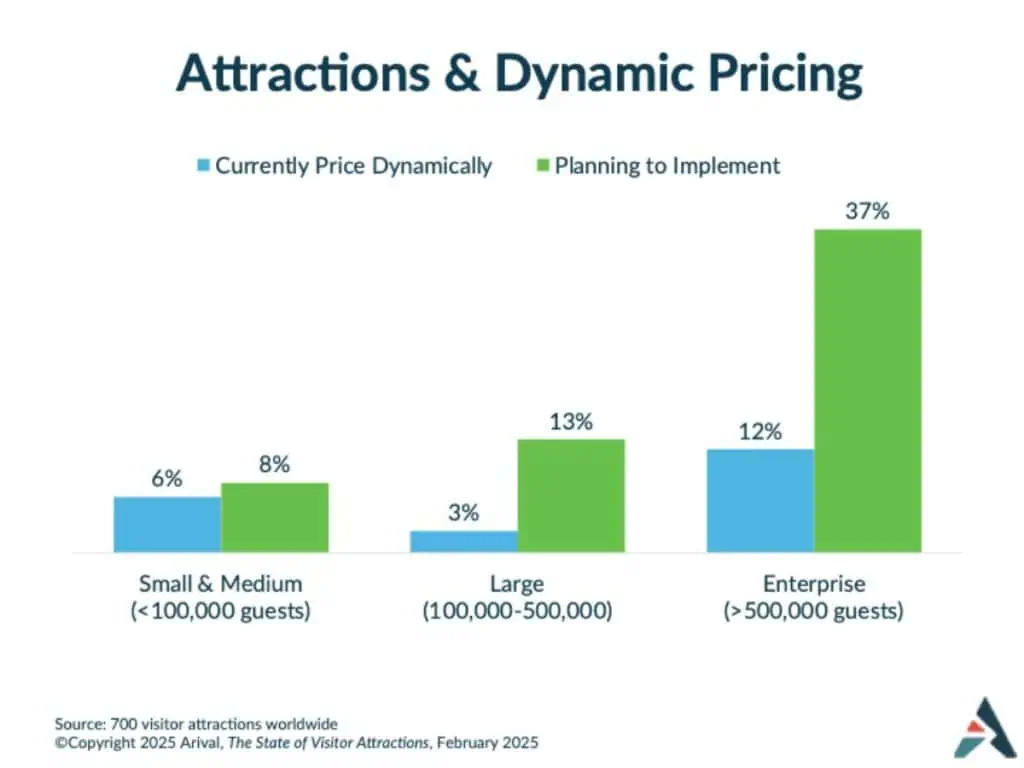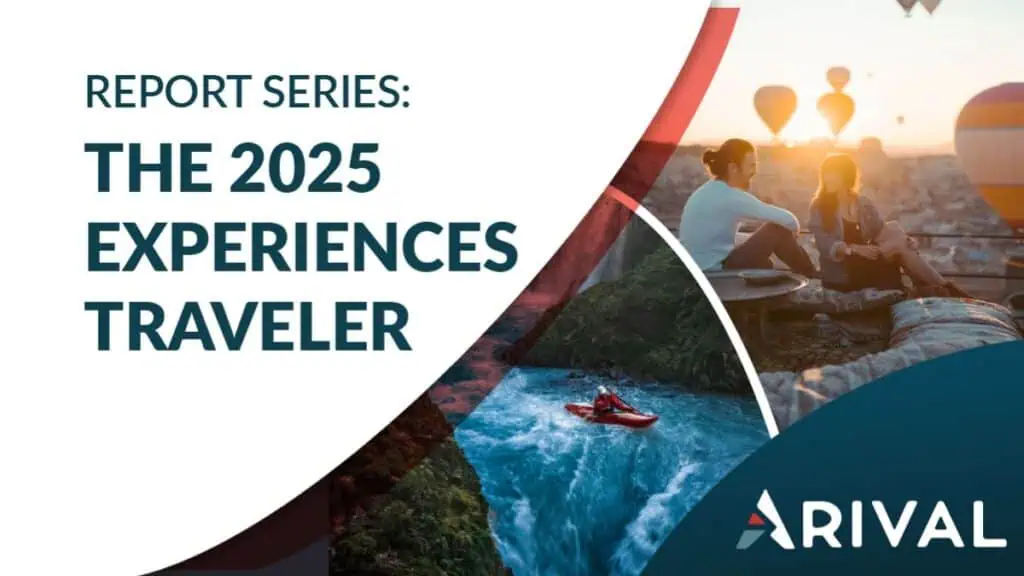We’ve all had that experience. We’re planning a trip and searching for flights. We find a pretty good fare and discuss it with our partner or travel companion. We then go back to book the flight, only to find the fare has gone up.
Most of the travel industry – airlines, hotels, car rental companies – have for decades operated a practice known as dynamic pricing: leveraging technology to set prices based on what the market is willing to pay, according to the software’s algorithms and available data. In the case of airlines, fares may change multiple times a day.
Now this practice is coming to day tours, activities and attractions.
Three Types of Pricing
There are three main ways experience operators can price their tickets:
Static Pricing: also referred to as fixed pricing, this means the operator offers the same price for the tour or attraction regardless of time or season or day of the week.
Variable Pricing: the operator varies the price of the same ticket or product for different days of the week or times of day (but those prices themselves do not change during the season). Operators may offer a higher price during high season or busy days of the week (e.g. Saturday) while offering a lower price for less busy times (e.g. 9 a.m. on Monday morning).
Dynamic Pricing: this refers to pricing changes that may happen more frequently, and are adjusted based on a variety of factors, such as forecasted demand, availability of seats, or weather. As with variable pricing, dynamic pricing enables operators to raise or lower pricing to accommodate demand, increasing pricing during higher demand periods and lowering prices to drive more business during softer windows or departures.

13-16 Oct 2026
Insider Pro Access Members Save 20%
THE event of the year for creators and sellers of destination experiences to connect, learn & grow.
Get your Super Early Bird Ticket Today!
How Operators Price Today
The vast majority of tour, activity and attraction operators – seven in 10 – say their pricing is static. They set once at the beginning of the year or season and do not change it. Approximately one in five do variable pricing, whereby the price offered varies based on departure day or time (but the price itself does not change during the season).
A much smaller segment of operators – 7% – claim they engage in dynamic pricing, whereby pricing may change day to day based on demand or other factors.

Interest in Dynamic Pricing on the Rise
Although few tour, activity and attraction operators use dynamic pricing today, interest in the practice is growing. Some 16% of operators, according to Arival’s Global Operator Landscape (3rd. Ed.) study, say dynamic pricing is a top strategic priority and they are seriously considering implementing it within the next year.
The interest is especially great with larger operators. One in 10 enterprise operators (which Arival defines as handling at least 50,000 guests annually) use dynamic pricing today, while another 26%, or one in four, say they plan to implement it over the next year.

Visitor Attractions More Focused on Dynamic Pricing
Visitor attractions, which include ticketed monuments and landmarks, museums, zoos, aquariums, amusement parks and observation decks, are much more likely to implement sophisticated pricing strategies, including variable and dynamic pricing. Attractions in general are much larger than tour operators. Arival defines large attractions as those serving between 100,000-500,000 and enterprise attractions as those serving more than 500,000 guests annually.
Attractions’ larger visitor volumes and typically limited space or capacity mean they have more immediate need to manage demand. For example, they can use variable or dynamic pricing to incentive visitation during off-peak hours. Some 17% of attractions offer variable pricing, and 6% do dynamic pricing. For enterprise attractions, the percentage pricing dynamically doubles to 12%.

These figures will increase dramatically over the next few years. While only 3% of large attractions and 12% of enterprise attractions price dynamically today, those figures are expected to quadruple for large operators, to 13%, and more than triple among enterprise operators to 37%.

Dynamic Pricing Providers for Tour Operators and Attractions
More and more companies are emerging to offer more sophisticated pricing capabilities to tour operators and attractions. Increasingly many booking and ticketing systems, including Anchor, Bokun, Bookingkit, Connect&Go, FareHarbor, Peek, Regiondo, RocketRez, Roller, Smeetz, TripWorks, Ventrata, Xola and others provide some form of rules-based pricing features.
A few platforms, such as Digonex, Smart Pricer, Walkway and others offer pricing specific applications for pricing intelligence and recommendations. Are there other providers of pricing software for tour operators, activity operators and visitor attractions we should be including here? Please let us know.
27-29 April 2026
Insider Pro Access Members Save 20%
THE event of the year for the European in-destination experiences industry
Save up to €730 with a Holiday Savings Ticket!
Learn More About Dynamic Pricing and Enterprise Attractions with Arival
Want more insights? Check out these articles on Variable and Dynamic Pricing for Tours and Attractions and How to Price Tours & Attractions Competitively, and the Inside Enterprise Attractions report from Arival and GetYourGuide. Also, join us at the next Arival event to learn more from the experts on the latest pricing strategies and technology for tours, activities and attractions.
Become an Insider Pro Access member today and get access to the full library of Arival research, plus many other benefits such as free consulting sessions, special discounts and 20% off in-person events, starting from $179 per year.
Sign up to receive insights tailored for the in-destination industry as well as updates on Arival.
Header photo: Pexels / Kampus Production
















